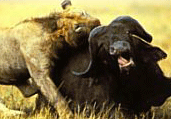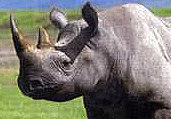The Maasai Mara national Reserve is Kenya's finest wildlife
sanctuary. The first sight of this park is breathtaking, natural
wonder a place where Maasai warriors share the plains with hunting
lions, a place of mighty herds and timeless cycles of life, death
and regeneration. Traditionally, the Maasai rarely hunt and living
alongside wildlife in harmony is an important part of their beliefs.
Lions and Wildebeest play as important a role in their cultural
beliefs as their own herds of cattle. This unique co-existence of
man and wildlife makes this Maasai land one of the world's most
unique wilderness regions. The wildlife is abundant and the gentle
rolling grassland ensures that animals are never out of sight. Birds
are plentiful with over 480 bird species recorded in the Reserve.
Commonest species include: Secretary bird, Vultures, Eagles, Guinea
fowls, Ground hornbills, Bustards, Somali ostrich, Herons, Ibis,
ducks, geese, plovers, sand grouse, rollers, kingfishers and many
others.
The Mara reserve, gazetted in 1961, it was done to protect animals
in a deserted and wild country, in which wildlife was coming to
an end due to massive killings committed by white hunters. The
lands of the Maasai Mara Game Reserve, widely considered being
Africa's greatest wildlife reserve. The Mara has been called the
Kingdom of Lions and these regal and powerful hunters dominate
these grasslands. The Mara comprises 200 sq miles of open plains,
woodlands and riverine forest. Contiguous with the plains of the
Serengeti, the Mara is home to a breathtaking array of life. The
vast grassland plains are scattered with herds of Zebra, Giraffe,
Gazelle, and Topi. The Acacia forests abound with Birdlife and
Monkeys. Elephants and Buffalo wallow in the wide Musiara Swamp.
The Mara River, the reserve's backbone, traverses north to south
heading for its westbound way unto Lake Victoria, through the
Tanzanian park. The Mara and Talek rivers are brimming with Hippos
and Crocodiles.
From July to October, is the best perid to visit Maasai Mara.
The best thing the Mara has to offer is the wildebeest migration.
The wildlife is far from being confined within the Reserve boundaries
and an even larger area, generally referred to as the 'dispersal
area' extends north and east of the game Reserve. Maasai live
within the dispersal area with their stock but centuries of close
association with the wildlife has resulted in an almost symbiotic
relationship where wildlife and people live in peace with one
another.
Between July and October, when the great wildebeests and zebras,
migration is in the Mara the sensation is unparalleled. This sensational
display starts during the month of July when the wildebeest start
moving north from the Serengeti. There are estimated to be over
1.5 million animals (one million wildebeests and 200,000 zebras)
that take part in this migration finding their way through the
crocodile-crowded river. The wildebeests move north in search
of the lush vegetation during the long rains. At the start of
October, when the Maasai Mara National Reserve experiences short
rains, the wildebeests return south to the Serengeti. On the return
trip the numbers are significantly less but the birth of new calves
during February of the following year make up the numbers, and
prepare for another migration and thus the cycle continues.
The wildebeests crossing the Mara river is comical yet sad. The
long rains flood the rivers, and yet the wildebeests senselessly
force their way upstream, and this causes many deaths and injuries.
But that is natures way of dealing with it all; the wildebeests
fresh death bring lions, vultures, jackals and hyenas who complete
the food chain part of the migration.
The climate is gentle, rarely too hot and well spread rainfall
year round from November through June. The grassy landscape and
the nutrient wealth for the great herds are maintained by the
abundant rains, as a fusion of the two rain seasons. When it rains,
it is almost always in the late afternoon or night and night storms
are frequent. In the hills and plains, grasslands are scattered
with acacia woods and bush. The riverbanks of the Mara and of
the multiple tributary streams are bordered by dense riverine
forests with a good chance to find some of the reserve's bird
species.
Accommodations ranges from stone built lodges to luxury tented
camps. Safari operators set up private tented camps for small
groups seeking exclusive and traditional safaris out of the Reserve.






